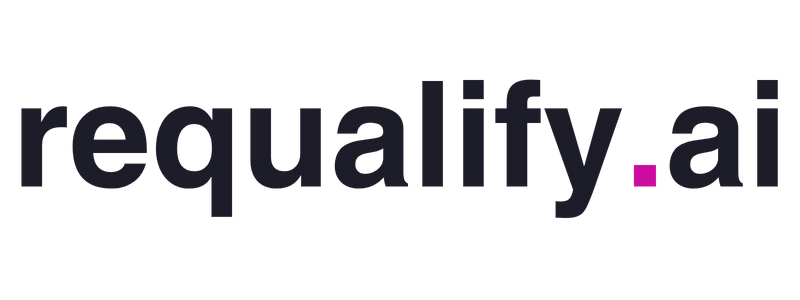
Summary: THE observation in natural environments is an essential technique in qualitative research, as it provides direct and detailed insight into human interactions in their real-world context (Dźwigoł & Barosz, 2020). Unlike other data collection methods, such as interviews and questionnaires, qualitative observation can capture nuances and spontaneous behaviors that participants are not always able to consciously report. However, for this approach to be successful, a careful planning, strong ethical concerns and solid recording and analysis methods (Tight, 2022). Digital tools and analysis software as the requalify.ai — which offers advanced AI-assisted transcription and coding capabilities — can streamline the process of organizing and analyzing data, especially when combined with other solutions such as Nvivo, Atlas.ti, MaxQDA or even Iramuteq. Next, we explore how to conduct observation in a methodical, ethical and reflective way, maximizing the quality of the information collected.
What is Qualitative Observation?
THE qualitative observation consists of systematically observing and recording behaviors, interactions, and contexts in a given environment (Aspers & Corte, 2019). Unlike the quantitative approach, which focuses on numerical metrics and statistical hypotheses, qualitative observation seeks an in-depth understanding of phenomena, valuing interpretation and contextualization. For example, in a study on relationships between teachers and students, notes may include everything from the way the teacher organizes the classroom to the students' facial expressions when answering questions.
Field Notes
To the field notes are the main recording instrument during observation (Heath et al., 2018). They can contain detailed descriptions of events, dialogues and even the researcher's subjective perceptions of the emotional climate or local culture. To maintain the quality of the notes, it is recommended:
- Organization: Divide notes into sections, such as environment, relevant interactions, and researcher reflections.
- Temporality: Record date and time to facilitate cross-referencing of data with other sources.
- Contextual details: Include information about location, weather conditions, spatial configuration, etc.
This wealth of detail can later help in codification of qualitative data when using tools such as requalify.ai or Nvivo.
Reflexivity
THE reflexivity refers to the critical awareness that the researcher develops about his/her own role in the study (Dargie, 1998). His/her values, perspectives and experiences can affect what is observed and how the phenomenon is interpreted. Throughout the fieldwork, it is recommended to keep a reflective journal, in which the researcher can record his/her thoughts, possible biases and emerging insights. This practice strengthens the validity of the study, as it makes explicit the subjective influences that inevitably permeate all qualitative research.
Contextual Data
The collection of contextual data — such as cultural characteristics, social norms, peak times in a workplace, or architectural peculiarities — is essential to understanding why behaviors occur in a certain way (Anguera et al., 2018). This data helps to make sense of interactions and relate them to external factors, expanding the depth of analysis.
Data Security
The digital age has brought many conveniences, but it has also raised ethical and security concerns. When using recording equipment or note-taking applications, it is essential to ensure the protection of sensitive information. Measures such as passwords, encryption, backups and even choosing secure platforms to store files are crucial (Fix et al., 2022). Specialized services such as requalify.ai have robust security protocols that can help researchers protect both recordings and transcripts.
Why Observe in Natural Environments?
Observe interactions and behaviors in your natural environment allows the researcher to capture the spontaneity and complexity of real situations, without the interference of scripts or predefined questions (Damaskinidis, 2017). For example, in a study on the routine of nurses in hospitals, on-site observation reveals dynamics between patients, nurses and doctors that would be difficult to replicate in a simulated environment or in a simple interview. When one has a set of contextualized observational records, coding and categorization become more accurate, as there is a rich volume of details that support the interpretation (Dźwigoł & Barosz, 2020). In this process, Qualitative Research with AI on platforms such as requalify.ai can provide a quick transcription of oral notes and assist in identifying thematic patterns.
Important Questions When Planning Observation
- What are the specific objectives of the research? Define whether the observation seeks to understand work interactions, cultural patterns or decision-making processes. With clear objectives, you avoid collecting irrelevant data.
- What behaviors or events deserve more attention? List the aspects of greatest interest, such as verbal communication, non-verbal signals or use of physical space.
- How will field records be organized? In addition to traditional field notes, video and audio recording technologies can complement observation. Transferring files to software such as Nvivo, Atlas.ti, MaxQDA, Iramuteq or requalify.ai, optimizes subsequent qualitative data analysis.
- How to ensure compliance with ethical principles? Obtain informed consent when observation involves identifiable people, in addition to ensuring data protection and confidentiality.
Answering these questions reduces uncertainty during fieldwork and makes the process more effective.
Frequently Asked Questions and Errors
Is it necessary to record everything that happens?
A common mistake is trying to document absolutely everything. Although qualitative observation values depth, it is neither feasible nor useful to write down every little detail. The ideal is to focus on behaviors and events related to the research objectives. If additional insights emerge, it is interesting to record them, but without losing the central line of the study.
How to deal with researcher interference?
Even when the researcher adopts a more passive stance—the so-called “non-participant observer”—his or her presence can influence the environment (Dargie, 1998). Strategies to minimize this effect include:
- Adaptation period: If possible, spend some time at the location before beginning formal note-taking.
- Transparent explanation: Inform participants about the purposes and nature of the study, obtaining consent when necessary.
Is electronic documentation reliable?
Documentation in digital format can indeed be reliable, as long as good security practices are observed (Fix et al., 2022). In the context of qualitative research with AI, the requalify.ai offers encryption and access control features. In addition, other renowned tools such as Nvivo, Atlas.ti, MaxQDA and Iramuteq also have secure protocols, but the researcher must verify that compliance with institutional rules and local privacy legislation is being followed.
Can a lack of reflexivity compromise the analysis?
Yes. The lack of a reflective stance on the part of the researcher can lead to distortions and biases in the conclusions. reflexivity It acts as a counterbalance to the inevitable blind spots in any research, especially when dealing with qualitative data.
Planning and Goal Setting
Before starting fieldwork, clearly define the research objectives. What do you want to investigate? What theoretical or practical gaps do you want to fill? From this, you should determine the role of the observer: will it be participatory, semi-participatory or completely remote?
Plan It also involves logistics: observation dates, recording equipment, number of researchers involved, and even strategies to overcome unforeseen circumstances — such as access restrictions or sudden changes in the environment. This step is essential to ensure that sufficient and relevant data can be collected to answer the research questions (Aspers & Corte, 2019).
Strategies for Keeping Detailed Field Notes
The richness of field notes directly influences the robustness of subsequent analysis (Heath et al., 2018). Some steps to improve this record include:
- Use Standardized Formats: Create a “template” containing fields for date, time, location, event type, description and personal reflections.
- Include Sensations and Perceptions: Although subjective, these elements can offer important insights into the dynamics of the environment.
- Digital Recordings: If feasible and ethically appropriate, use audio/video recordings to supplement written notes. Later, it is possible to transcribe the content with the help of AI on platforms like requalify.ai.
- Use of Mobile Applications: Note-taking and data organization apps can facilitate real-time systematization, ensuring that information does not get lost.
With these strategies, the transition to the data analysis stage becomes simpler, as the records will be organized and cataloged.
Practical Aspects: Data Security and Ethics
When it comes to observation in qualitative research, ethical aspects are as important as the data collection methodology. It is mandatory to evaluate:
- Informed Consent: Even in observation situations in public places, consider whether people can be identified and whether prior consent is required.
- Confidentiality Guarantee: Use pseudonyms to avoid exposing sensitive information about people or institutions.
- Secure Storage: Opt for reliable services and platforms, applying encryption when necessary (Fix et al., 2022). Researchers working with a large volume of files can benefit from specific tools, such as requalify.ai or traditional qualitative data analysis software with built-in security features.
In the current scenario, compliance with data protection legislation (such as the LGPD in Brazil) is an inseparable component of research ethics. It is essential to ensure that everyone involved is aware of the rights and duties inherent to participating in research.
Systematizing the Method
THE systematization involves clearly defining the researcher's time in the field, the frequency of observations, the way to approach participants (when applicable) and how the data will be organized and analyzed (Anguera et al., 2018). In the end, the researcher must be able to clearly answer questions such as: “How many hours of observation were carried out?” or “On how many different days was data collected?”
Such methodological rigor also facilitates the data validation. A best practice is triangulation — combining observation with other methods, such as interviews, focus groups, or document analysis. Using software such as Atlas.ti, MaxQDA, Iramuteq or requalify.ai can speed up the integration of these multiple sources of information, favoring a more robust analysis.
Reflective Analysis and Data Validation
The analytical stage must incorporate the reflexivity systematically. The researcher revisits his/her notes, questions possible biases and interprets the findings considering the social, cultural and historical context of the observed field (Dargie, 1998). To minimize distortions, it is common to resort to:
- Discussion with colleagues: Compare interpretations as a team, ensuring greater data reliability.
- Feedback to participants: In certain research models, present preliminary findings for validation or additional comments.
- Collaborative Coding: When using software tools for qualitative data analysis, dividing the coding process among multiple researchers can reveal interpretive discrepancies and enrich the analysis.
This is when questions like “How to do qualitative data analysis?” are answered more clearly, as the steps of careful recording and prior organization allow the interpretation to flow in a structured and reliable way.
Historical Context and Current Relevance
Observation has been widely used in anthropological and sociological studies throughout the 20th century, especially in ethnographic research. With the advancement of image and sound capture technologies, in addition to the emergence of Qualitative Research with AI, this practice has become even more sophisticated (Dźwigoł & Barosz, 2020).
Today, the challenge is to balance the real life complexity with ethical and digital security demands. In this sense, the innovations made available by software such as requalify.ai allow the integration of automatic transcription resources, facilitating the analysis of large volumes of data and bringing observational collection even closer to systematic analysis. The result is more comprehensive and secure research, responding to the needs of an increasingly complex and connected world.
Future Implications
As the artificial intelligence becomes increasingly present in the analysis of qualitative data, it is likely that new tools will emerge to handle the growing volume of information collected through observation (Tight, 2022). Researchers may benefit from machine learning algorithms capable of suggesting initial codes or even correlating patterns observed in different contexts.
However, the need for ethics and of a reflective posture remains unchanged. While technology makes the process more agile, it also requires extra care in terms of privacy and the interpretation of results. The use of platforms such as requalify.ai is inserted exactly in this convergence between technological innovation and respect for research participants.
Practical Tips for Efficient Qualitative Data Collection
- Set Clear Goals: Before you start, know exactly what you want to observe and why.
- Choose Appropriate Technologies: Recording tools, secure storage (with encryption) and qualitative analysis software (such as requalify.ai, Nvivo and others) must be selected according to the needs and ethical constraints of the study.
- Monitor Your Observer Position: Constantly evaluate whether your presence is altering the subjects' behavior and try to adopt strategies to minimize this impact.
- Be Consistent in Your Note-Taking: Create a field note standard and follow it closely to maintain consistency.
- Practice Reflexivity: Keep a personal journal about your impressions and possible interferences. This enriches the discussion of biases.
- Get Organized for Analysis: Think early on about how the coding will be done. The question “How to do qualitative data analysis?” should direct the collection, ensuring that the data is subsequently manageable.
Conclusion
THE qualitative observation remains one of the richest ways of understanding social and cultural phenomena in their complexity. When combined with meticulous planning, a reflective stance and appropriate technological tools — such as requalify.ai, which automates transcriptions and assists in qualitative data analysis —, the potential for gaining deep insights increases exponentially. In addition, the growing offering of software, such as Nvivo, Atlas.ti, MaxQDA and Iramuteq, expands the possibilities of data integration, triangulation and coding.
However, all this methodological and technological power must be balanced with ethical care and attention to data security, reinforcing the need for truly responsible research. Thus, observation not only maintains its relevance in the qualitative field, but also renews itself and becomes stronger in the face of advances in the digital age.
FAQ: Frequently Asked Questions
What is the advantage of using observation in qualitative research?
Observation allows you to capture behaviors and interactions in real time, providing insights that may not emerge in interviews or questionnaires.
Can AI software completely replace the researcher in analysis?
No. Although tools like requalify.ai assist in transcription and identification of patterns, interpretation and critical reflection still depend on the experience and perspective of the researcher.
How to ensure data security in digital field notes?
Use encryption, strong passwords, and make regular backups. Platforms like requalify.ai offer advanced security protocols for recordings and transcriptions.
Is informed consent required for observations in public places?
In general, public places do not require formal consent, but if people are identifiable or the study captures sensitive data, permission must be obtained and ethical guidelines must be followed.
How to deal with seemingly “irrelevant” information in the field?
Focus on your research objectives, but keep a record of observations that may be relevant later. Later screening or coding will indicate what is actually useful.
Can I use observation in conjunction with other qualitative methods?
Yes, and this is highly recommended. Triangulating data, combining observation with interviews or focus groups, enriches the analysis and increases the reliability of the results.
Bibliographic References
- Anguera, M.T., Portell, M., Chacón Moscoso, S., & Sanduvete-Chaves, S. (2018). Indirect observation in everyday contexts: Concepts and methodological guidelines within a mixed methods framework. Frontiers in Psychology, 9, 13. https://doi.org/10.3389/fpsyg.2018.00013
- Aspers, P., & Corte, U. (2019). What is Qualitative in Qualitative Research. Qualitative sociology, 42(2), 139–160. https://doi.org/10.1007/s11133-019-9413-7
- Damaskinidis, G. (2017). Qualitative research and subjective impressions in educational contexts. American Journal of Educational Research, 5(12), 1228-1233. https://pubs.sciepub.com/education/5/12/10/index.html
- Dargie, C. (1998). Observation in Political Research: A Qualitative Approach. Politics, 18(1), 65-71. https://doi.org/10.1111/1467-9256.00062
- Dźwigoł, H., & Barosz, P. (2020). Observation as a research method in social science. Scientific Papers of Silesian University of Technology, 148, 10. http://dx.doi.org/10.29119/1641-3466.2020.148.10
- Fix, G. M., Kim, B., Ruben, M., & McCullough, M. B. (2022). Direct Observation Methods: a Practical Guide for Health Researchers. PEC innovation, 1, 100036. https://doi.org/10.1016/j.pecinn.2022.100036
- Heath, S., Chapman, L., & Center Sketchers, T. M. (2018). Observational sketching as method. International Journal of Social Research Methodology, 21(6), 713–728. https://doi.org/10.1080/13645579.2018.1484990
- Tight, M. (2022). Observation: A Neglected Data Collection Method in Higher Education Research, Huisman, J. and Tight, M. (Ed.) Theory and Method in Higher Education Research (Theory and Method in Higher Education Research, Vol. 8), Emerald Publishing Limited, Leeds, pp. 149-162. https://doi.org/10.1108/S2056-375220220000008008


